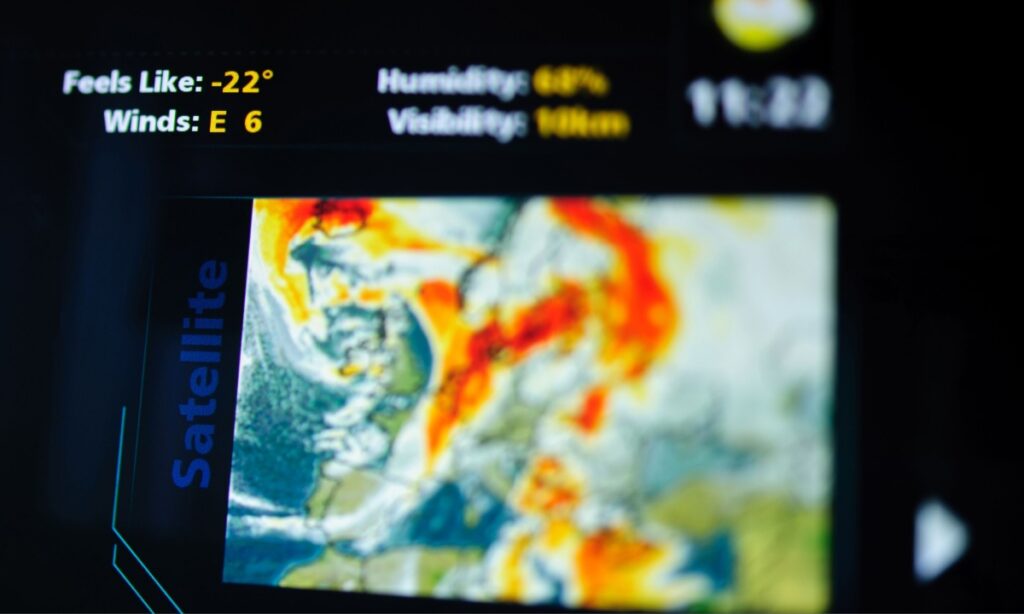Advances in artificial intelligence (AI) could greatly improve the accuracy of weather forecasts, potentially increasing the profitability of businesses that rely on the forecast.
Google has introduced a New AI model Capable of making accurate, large-scale weather forecasts at a lower cost than conventional methods. Experts say AI models can streamline operations, cut costs and empower decision-making across industries by providing more accurate and timely weather information.
“AI-based weather forecasts are useful because, as you’ve seen recent Google work, they’re generally cheaper than traditional physics-based forecasts because they can make predictions much faster. are.” Marty SullivanPostdoctoral Researcher in Earth and Atmospheric Sciences Cornell University, Told PYMNTS.
AI can be better at forecasting.
Google’s “Scalable Ensemble Envelope Diffusion Sampler” (SEEDS) model, which works similar to popular AI tools like OpenAI’s ChatGPT, is improving weather forecasting by quickly and cheaply generating multiple possible weather scenarios. In a study published in Science Advances JournalNoting its increased efficiency compared to conventional models.
Generally, weather forecasting uses physics-based methods. Take different measurements and combine them. in a range of possible outcomes rather than just a prediction.
AI can be helpful when a prediction is not known or fully explained by only a few variables—in this case, the physics of weather, Phil SegalFounder of the AI nonprofit Center for Advanced Preparedness and Threat Response Simulation (Captres)told PYMNTS.
“Often, these models can use data in hard-to-model ways that are difficult to put into a purely computational model,” he added. “The other side of this is that the AI may think it sees patterns that aren’t there. That’s where machine learning comes in — making sure the results are fed back so the AI can improve. “
A new study reinforces the idea that AI can beat traditional forecasting methods. Researchers at the University of Reading recently Evaluated the performance of AI-based weather models. Comparing their predictions for Cyclone Ciarán – a severe storm that hit northern and central Europe in November, which caused 16 deaths and damaged more than a million homes in France – to those based on conventional physics With models.
The research found that weather forecasts using machine learning can achieve the same accuracy as traditional methods, but with greater speed, lower cost and less computational demand. The results were published in the journal Climate and Environmental Science.
The study involved four AI models developed by companies such as Google, Nvidia and Huawei. These models accurately predicted the intensity and speed of the storm 48 hours ahead. The results were nearly identical to conventional models, effectively relating key atmospheric conditions, including storm position to the jet stream.
Andrew Charlton Perez, who led the study, said AI is changing weather forecasting before our eyes. News release. “Two years ago, advanced machine learning techniques were rarely applied to weather forecasting. Now we have multiple models that can make 10-day global forecasts in minutes.
“We can learn about AI weather forecasters by stress testing them on extreme events like Cyclone Ciarán,” he added. AI can lead to the development of even better forecasting technology to help with safety. This is an exciting and important time for weather forecasting.
Advantage of fair weather
Even a small increase in weather forecasting capabilities can boost businesses’ bottom lines. AI-powered weather data offers a valuable signal that companies can use to increase supply chain flexibility and improve accuracy in forecasting demand, material availability and other key logistics elements. Jello Tecala.executive vice president of engineering at a supply chain management company Connexustold PYMNTS.
“Powered by geographic location and historical patterns, retailers can adjust inventory levels in real-time, stocking up on summer essentials like sunscreen during a heat wave or scarves and snow before a snowstorm. can double suit orders, minimize the risk of empty store shelves, while keeping customers happy,” he said.
Likewise, companies can use AI-powered forecasts to reroute shipments and avoid anticipated delays or damage due to weather conditions like snowstorms, ensuring smooth operations and avoiding disruptions, Ticala said. To minimize the effects.
“Weather is an inevitable wild card for both consumers and companies, but the ‘what if?’ With scenario planning capabilities, supply chains will one day be able to gain the edge they need to match Mother Nature.
